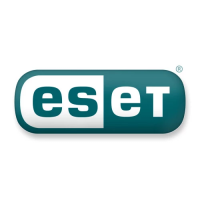Chapter 3. Mail server in UNIX OS environment
The meaning of abbreviations used in the scheme of figure 3-1 is as follows.
MTA (Mail Transport Agent)
A program (for instance sendmail, postfix, qmail, exim, etc.) receives e-mail messages from
local and/or remote domains and forwards it for further delivery. Generally speaking, MTA
is an agent providing mail transfer among other e-mail servers MTAs and/or MUAs (see
below).
MDA (Mail Delivery Agent)
A program (maildrop, procmail, deliver, local.mail, etc.) providing delivery of an e-mail
into a particular mailbox.
MUA (Mail User Agent)
An e-mail processing program (MS Outlook, Mozilla Mail, Eudora, etc.) that allows user to
access and manage e-mail messages (i.e. read, compose, print them etc.).
MAILBOX
A file or a file structure on a disk serving as the storage space for e-mails. Note: There
are several formats of Mailboxes in FreeBSD OS. (e.g.: an old fashioned format where e-
mails for each user are stored sequentially in one user appropriate file located in directory
/var/spool/mail; MBOX (a bit newer but still an old format) with e-mails stored sequen-
tially in one file located within user home directory; MAILDIR with e-mail stored in a sep-
arate file within a hierarchical directory structure.
Now the scheme in the figure 3-1 represents a typical e-mail gateway placed at an entrance to
some local network. This means that the e-mail server receives data communication typically
via TCP port 25 (SMTP - Simple Mail Transfer Protocol is used within this process). The mes-
sage received is transfered by the local MTA either to another remote e-mail server system or
the message is delivered by using local MDA into the appropriate MAILBOX (we assume that
each user belonging to the local network has a corresponding MAILBOX located at the server).
It is then a responsibility of the client’s local MUA to provide download and/or correct inter-
pretation of the message at the client’s computer. To get the data from an e-mail server system
the MUA uses typically TCP port 110 (POP3 - Post Office Protocol) or TCP port 143 (IMAP -
Internet Message Access Protocol). On the other hand if a user at the client’s computer would
like to send an e-mail message to the Internet, it is again the responsibility of the local MUA to
deliver the message via TCP port 25 (SMTP) to the local MTA (located at an entrance to the local
network) that will take care of the further message delivery.
The operating principle of NOD32LMS system is based on the idea of data communication in-
terception at the various phases of its transfer and of scanning this communication by NOD32
scanning engine. Those locations are marked in the figure 3-1 by symbols S1, S2 and S3. In the
following text we will distinguish between three scenarios of e-mail message scanning which
basically corresponds to the referred marks:
6
